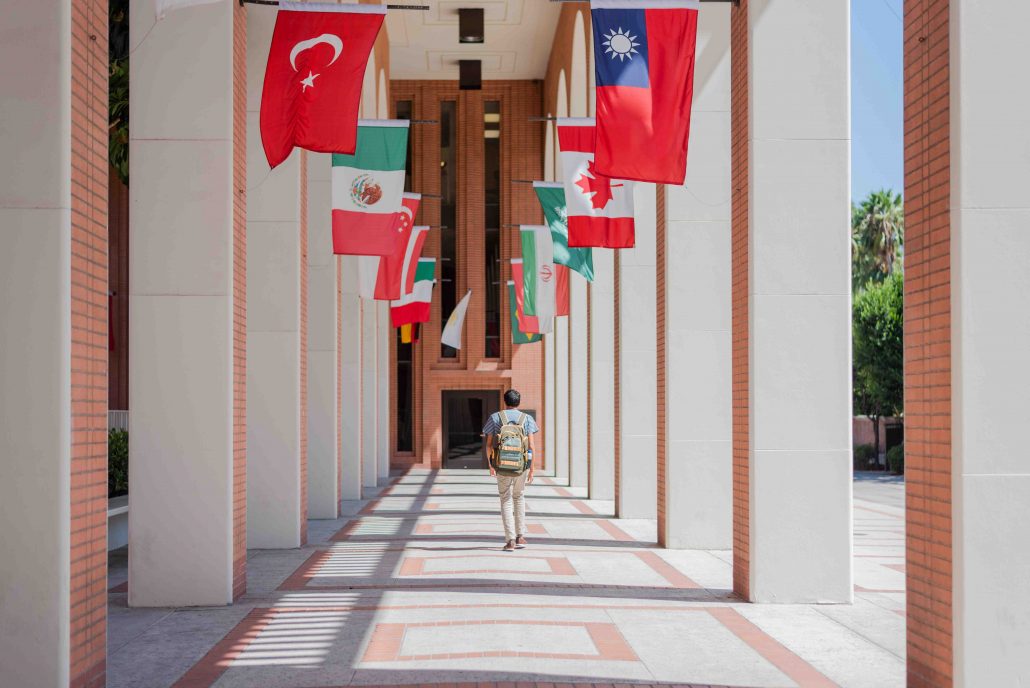USC should expand options for interdisciplinary studies

Within this last decade, the rise of technology, globalization and shifting attitudes and values has cultivated an increasingly interconnected and complex world.
Therefore, it is important for universities like USC to develop curricula that not only reflect these rapid changes but also offer tools that allow the next generation to best adapt to them. One of the easiest ways USC can support its students through this change is by expanding its interdisciplinary studies.
Interdisciplinary majors allow students to combine multiple, often complementary fields of study into one program and degree. These majors can expose students to different fields of study, rather than confining a student to one.
The wide array of choices allows students to look at a similar theme from different angles, which only deepens their understanding of a problem. In fact, Zahir Irani, the pro-vice-chancellor at the University of Bradford in the United Kingdom, explains that rigid departments can hurt innovation, and interdisciplinary studies create “context-specific programmes that better suit industry and prepare students for jobs.”
Additionally, Irani argues that interdisciplinary programs also benefit the academic institutions themselves, as research councils now look to fund projects that intersect multiple fields of study and bring new insight.
Interdisciplinary studies increase critical thinking skills, allowing students the ability to compare and contrast ideas across multiple fields. College should be a time of exploring new disciplines, and interdisciplinary studies allow students to cross into fields they might otherwise not have taken underneath one concrete major.
Currently, there are seven interdisciplinary majors and 15 interdisciplinary minors listed on the Dornsife College of Letters, Arts and Sciences website, with the additional option for students to create their own interdisciplinary major.
However, the option for students to create their own interdisciplinary course is extremely competitive, requiring an extensive application and very specific idea of what students want to do. So most students who choose to pursue an interdisciplinary program must pick from one already created by USC. For this reason, USC should focus on developing a wider array of options of interdisciplinary studies they can offer to interested students.
Thus far, USC does acknowledge the benefits of interdisciplinary studies through some of the available choices of interdisciplinary majors. The interdisciplinary health and the human sciences major allows students to choose from courses like chemistry, sociology, psychology, gender and sexuality and international relations. In contrast, students are confined primarily to biology classes if they choose to pursue a Bachelor of Arts in the non-interdisciplinary major of human biology.
USC also offers interdisciplinary minors, such as the international health, development and social justice minor, which allows students to choose from classes like anthropology, biology, economics, international relations, philosophy and political science. Instead of forcing a student to choose between multiple topics, they enjoy this minor, along with other interdisciplinary minors, allows students to look at a problem through many different lenses, thereby using the diversity of the minor to broaden their perspective.
Out of all the available interdisciplinary majors already created, there are only programs with Bachelor of Arts degrees, with none offering degrees in Bachelor of Science. This focus on interdisciplinary majors within liberal arts means that there is certainly room for USC to grow its interdisciplinary program into STEM.
In fact, The Engineer of 2020 report calls for “an engineering profession that will rapidly embrace the potentialities offered by creativity, invention and cross-disciplinary fertilization to create and accommodate new fields of endeavor, including those that require openness to interdisciplinary efforts with non-engineering disciplines.”
Although it may be more challenging to infuse the fluidity and flexibility of interdisciplinary studies into rigid STEM course work, students should have the option to explore multiple fields of study, regardless of whether their major is humanities or science-based.
Ultimately, an emphasis on interdisciplinary studies creates a more well-rounded student body with the tools needed to take on the nuanced, complicated problems that surely await post-graduation.

